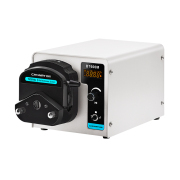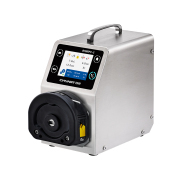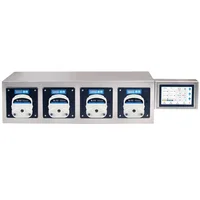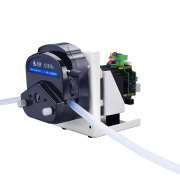Chonry Peristaltic Pump
Peristaltic Pump Basics
Peristaltic Pump Basics
Unlike other types of pumps, the peristaltic pump does not have any moving parts. The only parts that come into contact with the liquid are the tubing and the hose. A peristaltic pump can be used for many applications. Its main use is to transfer fluids that have high viscosity and solids content. It is also a good choice for chemical dosing.
The peristaltic pump works by applying a vacuum to the liquid's inlet and pulling it into the pump. The pressure is then transferred into the hose or tube, where it moves along the tube or hose to the outlet. It is important that the hose is made of a durable material that can handle the fluid. Having the right hose means that you can avoid accidental leaks and reduce maintenance. Some hose materials are rated for different fluids. You will need to select a hose with the right chemical compatibility to prevent corrosion.
Another factor to consider is how thick the wall of the hose or tube is. A thin wall can cause the pump to be inefficient. It can also increase the wear and tear on the tube and hose, and can decrease its life. Ideally, the wall thickness should be in line with the space between the roller and the housing. This way, you can achieve maximum squeeze on the tubing.
The pump also needs to be able to move liquids at high pressure. A pump that does not handle high pressure will not be able to produce the correct flow rate. This is especially true of viscous liquids. If you want to run your pump at high pressure, it is important to purchase a hose that is rated for the pressure.
The pump also requires a lubricant, to prevent abrasion of the internal tube. Some peristaltic pumps also have an adjustable shut-off function, which can be used to regulate the pump's operation for different pipe materials.
The peristaltic pump's tubing has broad chemical compatibility. This allows it to be used to deliver a wide range of liquids. Some fluids will require a softer silicone tubing, while others will need a fluoro elastomer to prevent corrosion in chemically corrosive media. It is also important to consider the temperature of the pumped media. For example, if you are using the hose for CIP or SIP, you will need a hose that is rated for both the temperature and the pressure.
Choosing the proper tubing material for your peristaltic pump is crucial to its efficiency. This is because the hose and the tube will be exposed to a wide variety of chemicals. Some of these chemicals may require a hose with good or excellent hose ratings. Other chemicals may require a hose that is rated for higher pressure.
Some peristaltic pumps can be operated in either clockwise or anticlockwise. These are often ideal for high-pressure applications. They are also ideal for cleaning applications and for handling corrosive liquids.
0users like this.







